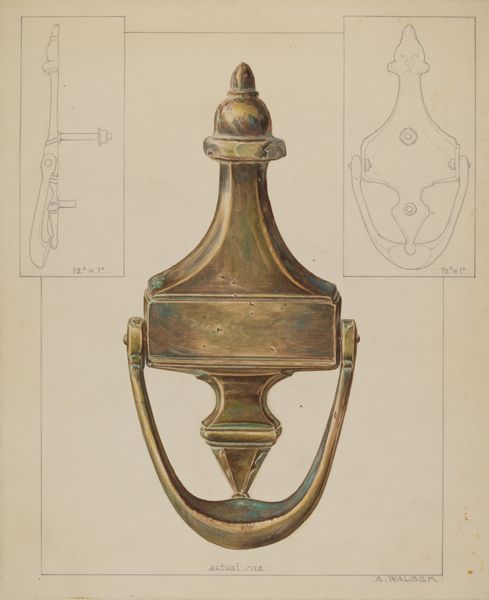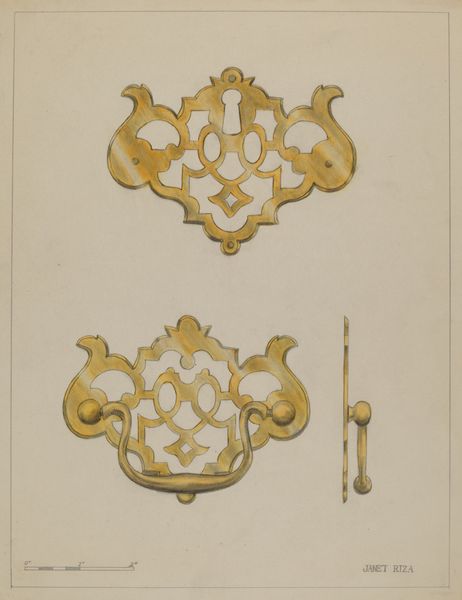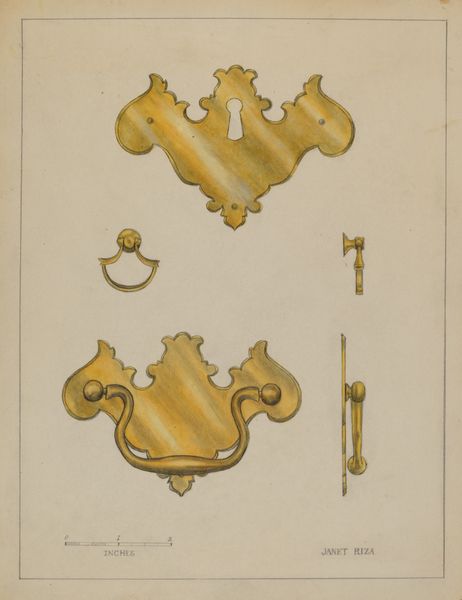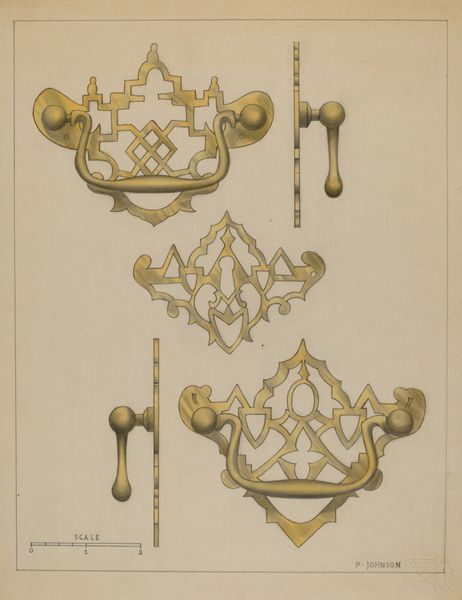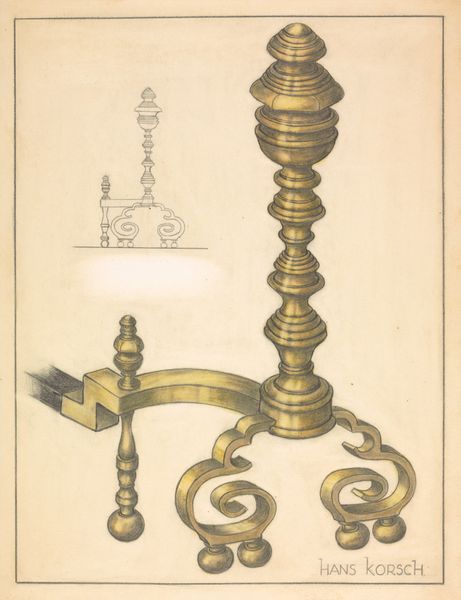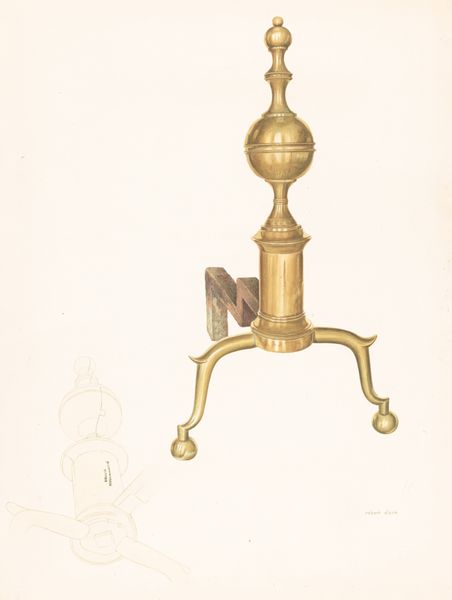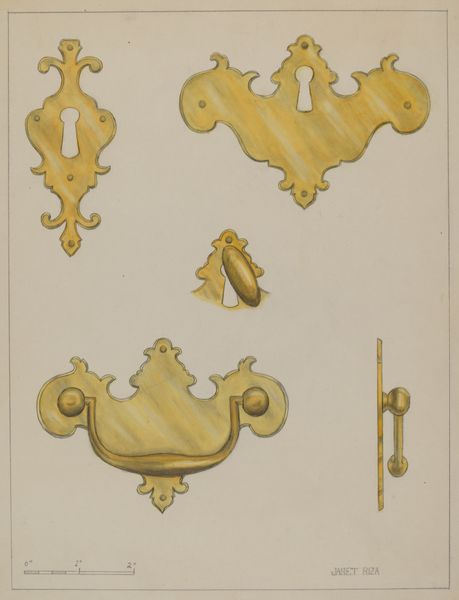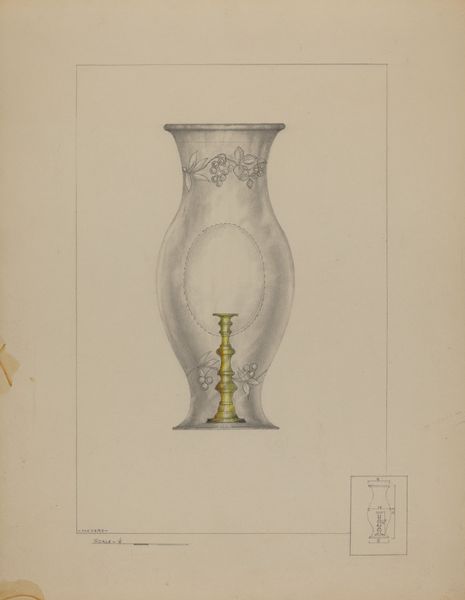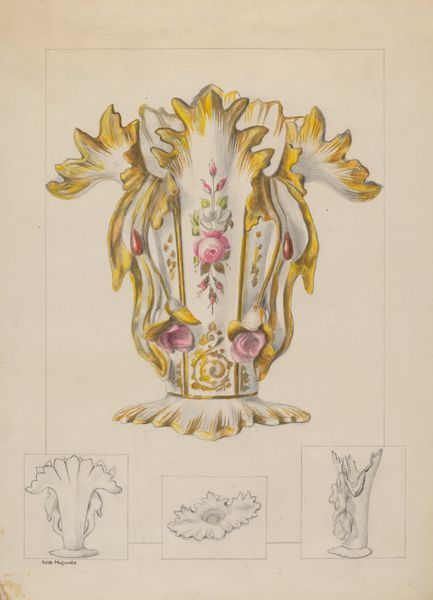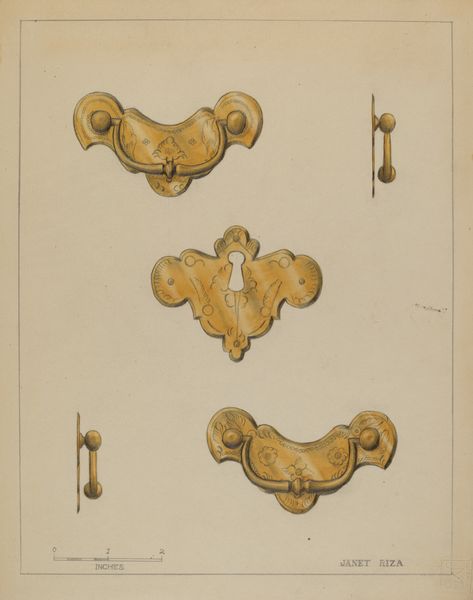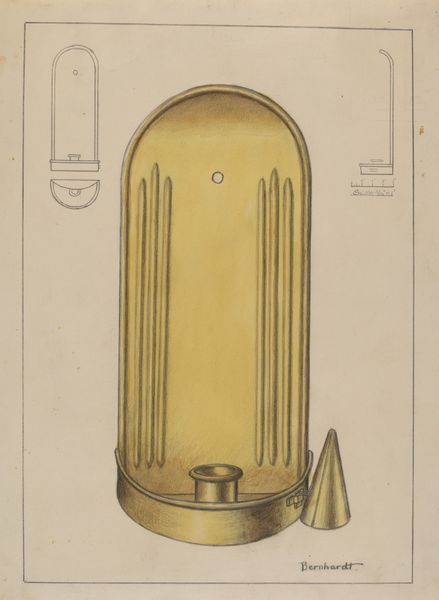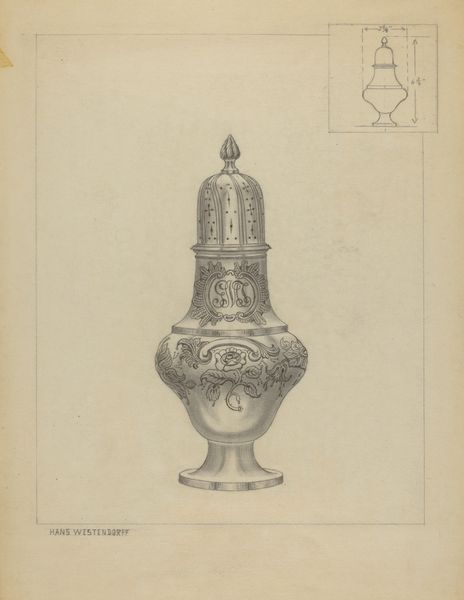
drawing, pencil
#
drawing
#
classical-realism
#
pencil drawing
#
pencil
#
decorative-art
Dimensions: overall: 29.8 x 22.8 cm (11 3/4 x 9 in.)
Copyright: National Gallery of Art: CC0 1.0
Curator: Looking at Janet Riza's pencil drawing "Door Knocker" from around 1936, I’m immediately struck by the quiet opulence of it. The rendered gold tones make the humble subject feel regal. What about you? Editor: The architectural details here are quite captivating; this drawing is rendered with incredible precision, isn't it? And the use of mythical figures, those miniature sphinxes perched atop, it seems a deliberate statement about power, perhaps about who or what gets to guard entry. Curator: Exactly! It feels symbolic, doesn't it? Like Riza isn't just drawing a door knocker but also suggesting a kind of barrier. I can't help but think of those Art Deco cinemas, so glamorous but somehow also...fortified. Editor: I appreciate that you’re calling attention to the context of decorative art from the '30s, but the door knocker, in my view, could also represent a contested space—access and denial. Who gets to knock? Whose knock is answered? It's all so intricately coded, the way architecture often is. Curator: That makes perfect sense, and I bet Riza would find that a very fruitful interpretation. Thinking about it, the decorative arts often hide in plain sight, almost demanding closer scrutiny, especially regarding gender. I imagine a female artist capturing a traditionally male space—or a gateway. Editor: That's definitely worth dwelling on. There's also the fact that Riza likely conceived of this as a design, which may never actually have been produced. The drawing becomes a record of something that never came to be. Curator: A kind of unrealized dream. It speaks to the power of design, and the optimism, that even during the Depression era, ideas could take flight on paper, at least. I think I am now wondering if Riza did produce a door knocker out of this blueprint, I should like to go knock! Editor: So much can be revealed even within these kinds of intimate artistic studies. Thinking about accessibility, and who gets to make an entry—literal or figurative—I would say Riza does. Curator: Well said, a knock that resonates decades later. It just makes you wonder, what doors did Riza want to open?
Comments
No comments
Be the first to comment and join the conversation on the ultimate creative platform.
